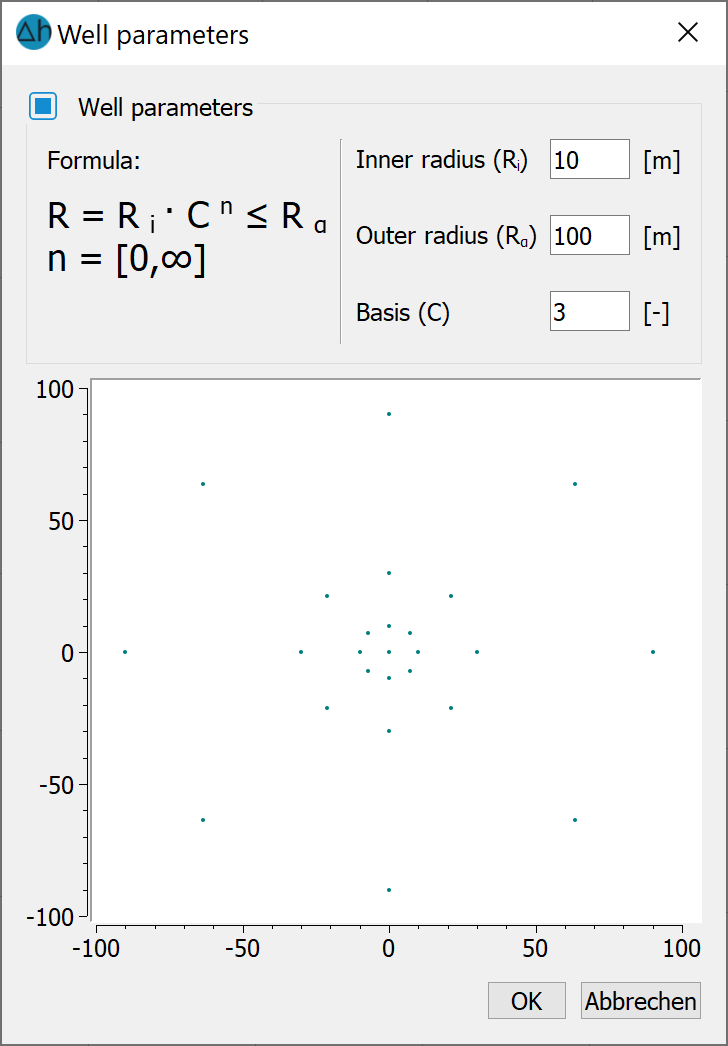Groundwater abstraction at wells creates a drawdown funnel or cone of depression, which is characterised by increasing hydraulic gradients with increasing proximity to the well. In order to adequately depict this situation in a model, a radially symmetrical refinement of the mesh around the well is required. Since the gradient increases as the well is approached, exponential refinement is advantageous. The parameters of the refinement must be selected depending on the hydraulic conditions. For example, areas with low hydraulic conductivity and thus significant groundwater drawdown require a small inner radius (e.g. 2 m) but also only a small outer radius (e.g. 50 m) since the area if effect will be smaller. Lower levels of discretization can be used for shallower (or “flatter”) cones of depression. Starting from the distance of the inner radius from the well, the nodes are arranged radially symmetrically with exponentially increasing distance around the well until the selected outer radius is reached or exceeded.
The well parameters are defined as part of contour editing during mesh creation. By navigating to Contour  Edit p-contour
Edit p-contour  Well parameters, an input window for the discretization around the well appears after selecting the corresponding nodes. The following figure shows the relationship between the parameters and the element mesh refinement:
Well parameters, an input window for the discretization around the well appears after selecting the corresponding nodes. The following figure shows the relationship between the parameters and the element mesh refinement:

Radially symmetrical arrangement of the mesh nodes for well discretisation
When discretisizing horizontal filter wells, the individual lines must be taken into account during discretisation. Each line should be represented with several mesh nodes at intervals of 5 m to 10 m. An exponential mesh refinement as with vertical wells is not necessary, as groundwater drawdowns in horizontal filter wells tend to be more areally extensive. The distribution of the total abstraction volume should not be evenly distributed across all the well nodes, but rather in such a way that the resulting potential head is distributed as evenly as possible across the line.
